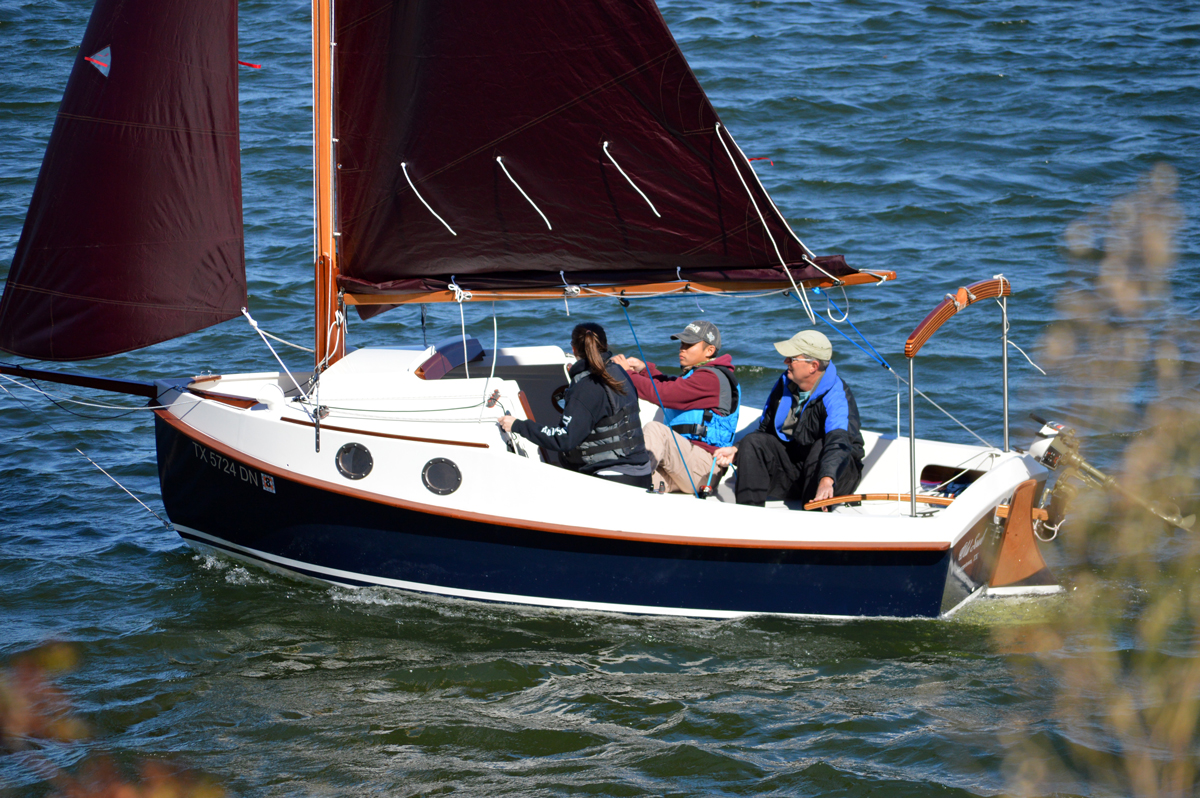 |
| Keel Front End, Ready for Lead Pour |
Shown at right is the front end of the keel ready for the first lead pour. I have clamped concrete blocks to the sides because the weight and heat of the molten lead could cause them to spread or even separate.
 |
| Lead Starting to Melt |
Here is some of the scrap lead I purchased starting to melt. I purchased a standard cast iron pot to serve as the melting pot and borrowed the bottom section of a turkey fryer to use for heating the lead. At this point I have on a respirator and will be donning a full face mask before I begin pouring lead.
 |
| Melted Lead -- Dross Removed |
The lead is melted and ready to pour. I removed the dross (impurities) earlier with a slotted spoon. (More about that later.) Any impurities are very easy to remove because they are all so much lighter than lead they float immediately to the top.
 |
| Lead Pour in Keel Front |
This shows the approximately 15 1/2 pounds of lead just after it was poured into the front section of the keel--just in front of the centerboard trunk. There was a lot of smoke from charred wood, but it had mostly died down by the time I took the picture. According to Chesapeake Light Craft (CLC), this does not hurt anything. They call it "flash charring."
 |
| First Lead Pour Behind CB Trunk |
Here you see the rear section of the keel after the first pour. You can't see any lead from this angle, but you can see a little of the smoke.
 |
| First Lead Pour Viewed from Above |
 |
| Finished Lead Pour, Behind CB Trunk |
First rear-section pour from above. You can see the lead and just barely see smoke toward the aft end. The only concrete blocks I could find were 16" long, and the opening is 22" so I had to use two on each side. The clamp in the middle is just tight enough to keep the blocks from spreading, but not tight enough to squeeze the keel sides inward.
Rear section after the second and final pour. Hard to see, but the lead has been left about 1/2" below the top of the keel. A wood cap will be fitted in place over the lead and over the hollow section behind it. There is 92 pounds of lead in this section.
 |
| Dross |
The pile of dross and other odds and ends I removed from the molten lead. In the next picture you'll get a better idea of how high the pile is. I bought scrap lead and it had quite a bit of impurities and other stuff attached to it here and there. I got most of the dross out and what was left looked very nice. I had about 8 pounds of lead left over which I have made into small ingots for now.
 |
| Some of the Lead Working Utensils |
Here I laid the utensils I used to remove the dross against the pile of dross. I purchased a cheap slotted spoon for the job, but right after the first pour the bowl of the spoon just fell off. Apparently it was soldered to the handle and the heat melted the solder. Luckily it happened between pours and I had a chance to run out and buy a solid stainless steel spoon--well not really, it is a spaghetti lifter, but it was all I could find in a hurry. Turns out it worked very well.
Gluing the Centerboard Halves
 |
| Centerboard Halves |
The two halves of the centerboard are laid out and ready for me to glue. The rectangular holes are for lead. As CLC points out, the weight is to pull the centerboard down not for righting moment--but I think 20 lb. that far down will definitely help.
 |
| Hole for Lead Weight |
A closer view of one of the holes shows the rabbet cut out all along the outside edges. When the two halves are glued together this will leave a hollow area around the hole, so that when the lead is poured in it will flow into the hollow. That will hold the lead in place.
 |
| Gluing Centerboard Halves |
And, finally, the centerboard halves glued, clamped, and weighted. One paint can wasn't full so I added more weight on top.













No comments:
Post a Comment